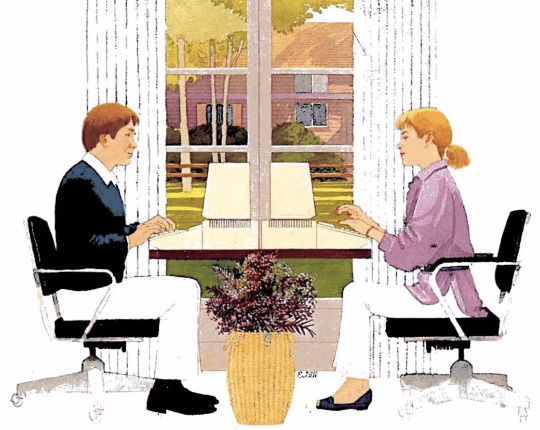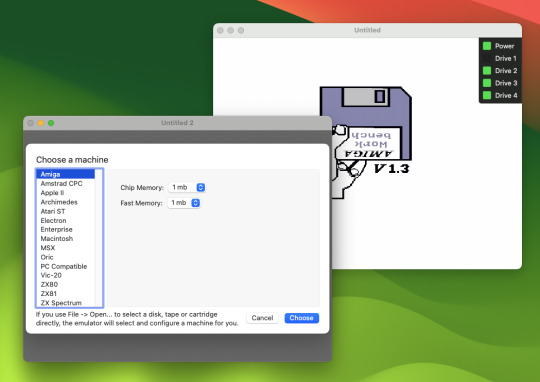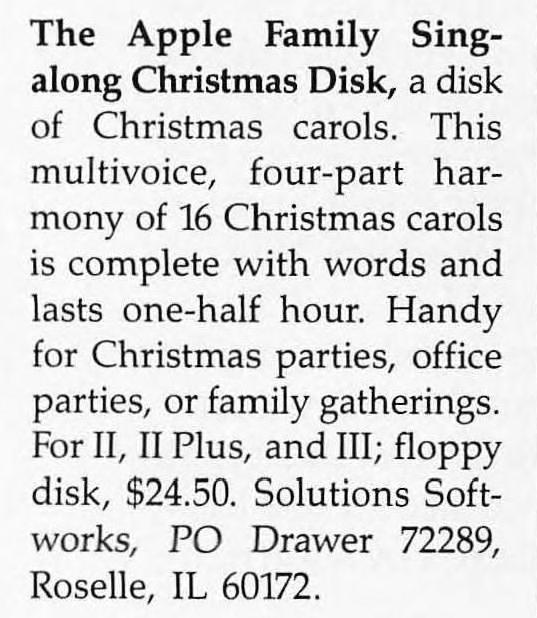#Apple II/II+/IIe
Explore tagged Tumblr posts
Text


Clock Signal 2024-05-27 - A latency-hating emulator of: the Acorn Electron and Archimedes, Amstrad CPC, Apple II/II+/IIe and early Macintosh, Atari 2600 and ST, ColecoVision, Enterprise 64/128, Commodore Vic-20 and Amiga, MSX 1/2, Oric 1/Atmos, early PC compatibles, Sega Master System, Sinclair ZX80/81 and ZX Spectrum
#commodore#retro#amiga#vintage#classic#emulator#Acorn Electron#Archimedes#Amstrad CPC#Apple II/II+/IIe#early Macintosh#Atari 2600 and ST#ColecoVision#Enterprise 64/128#Vic-20#MSX 1/2#Oric 1/Atmos#early PC compatibles#Sega Master System#Sinclair ZX80/81#ZX
11 notes
·
View notes
Text
Fine. I’ll jump on this. Hope y'all like DILF and GILF content.


fully exposed electronics, like the actual circuitry, that's high art. that's the appreciation of nudity. it's bold and brazen and yes, a bit horny.
translucent shells and casing ? girl that's lingerie, that's seduction and teasing. little bits of exposed wires and recessed reset switches, being able to see almost everything....that's more than "a bit" horny
#Early 2011 MacBook Pro 15”#1987 Apple IIe Platinum#tech#computer#computers#photos#apple ii#macbook#macbook pro#mbp
10K notes
·
View notes
Text

How To Use The Apple II & IIe (1983)
191 notes
·
View notes
Text
I'm an Old-Ass Gamer

I can still remember my bugging my parents for quarters for the arcade at 9 years old wanting to play Galaxian and Asteroids. And I could play those games for hours if I had enough money. But we were the first generation of gamers that grew up on vector line games with minimal graphics and having to rely on mostly our imagination as far as getting any sort of fun out of a game that looked like a collection of squiggly lines.
Then along came a coin-operated Star Wars game in 1983 - which was my first foray into playing anything related to Star Wars.

This was my first chance to pilot an X-wing and even though those graphics were just squiggly lines and filling it in with my imagination, "I was Luke Skywalker" going after the Death Star".
Now we have games like the Sims 3...

...with mods...they look almost "human". This kind of game I couldn't picture back in 1983 as a 13yr old hanging out at the arcade in between algebra class and homework - that I would be able to play with characters that I've grown attached to and my literary creative side keeps seeking to write stories about.
The Star Wars game I play now is vastly different from the arcade game I played back in 1983.

Even though this game (Star Wars the Old Republic) is set in an era long before the Galactic Empire and Palpatine even were a thing - it is Star Wars, with lightsabers, Jedi, Sith and all sort of other characters and retain the feel of Lucas's Star Wars that we love and miss (at least I do. I don't find Disney's offerings worth watching). There's even space combat which I still find difficult. So I stay away from the "Starfighter" portion of SWTOR and play with my Jedi, Sith, Trooper, Bounty Hunter, Imperial Agent and Smuggler.
The Flight Simulator II that I remember flying in my youth on the Apco (Apple IIe clone) computer,

...has turned into...

or

These are games that I couldn't even conceive of in my youth playing vector line graphic games and it shows just how much computer graphics has changed in 45 years.
I don't have the ability to be able run inZoi on my current computer. But I'm eager to see how far the boundaries of computer gaming graphics gets pushed over the next twenty-five or hopefully thirty to to forty years I have left to walk on this earth. You kids are gonna have it so lucky.
#sims 3#ts3#Star Wars the Old Republic#SWTOR#Vintage Video Games#MS FSX#Asteroids 1979#Star Wars 1983 Video Game#Sublogic Flight Simulator#Old Ass Gamer#Gen X Gamer#I'm so old I fart dust
10 notes
·
View notes
Text
I don’t remember a time when new video game systems and titles weren’t expensive.
The Atari VCS (aka 2600) launched in September 1977, with its 6507 processor and a mighty 128 bytes of RAM - yes, bytes, enough to store 16 old-school ASCII characters - and a total of 9 games available! - for $199 USD, equivalent to $1,024 today.
An Apple IIe from 1983, with a comparatively huge 64 kilobytes of RAM, cost $1,395, equivalent to $4,400 today, and that wasn’t including a monitor, joystick, or Disk II floppy drives.
The PS2 cost $550 in today’s money.
If you consider modern phones as gaming platforms - and they are - an iPhone 16 starts at $799, and it beats or equals most last-gen consoles and similar handhelds.
It’s easy to get sticker shock when a new console launches, but the thing to think about is, what value will you get out of it?
I have a Switch 1. It still plays games just fine. I don’t need 4K HDR 120+ fps and full raytracing to get immersed in a good game.
I didn’t buy mine when it was first launched in 2017, at $299 USD, but a few years after. Even so, $299 then is $387.50 today. So a price jump to $449 for the Switch 2 is really just $61.50 more.
To me, the Switch was worth it because it provided excellent value. The lineup of first-party titles was great, and the ones I got have enough depth that you can play them literally for years before you 100% them. (I’ve just barely scratched the surface of Breath of the Wild, and I never finished Super Mario Odyssey.)
And I found some amazing digital titles like Superliminal, Yooropa, The Pathless, and others.
So for a system I paid $387 for in today’s money, and about $300 in games, I got 6-7 years of core use out of it, so $687 / 2,555 days =$0.27 a day or about $8/month.
Consider, too, that the Switch 2 brings a lot of improvements (4k, HDR, 256gb storage, 120fps, faster memory, more ports, bigger screen, etc.) over the original, and it’s backwards compatible, which is something its competitors can’t say.
Ultimately, you don’t have to buy this! And if you can’t afford it, you shouldn’t!
But if you do want one, wait; and, as with the original, it’ll get revisions and price cuts. There will likely be a cheaper Lite version. Refurbished units will eventually be available. And a game that’s excellent now will still be excellent in a couple of years.
yes the game key card thing suuucks i agree on that
2 notes
·
View notes
Text





Smart Rabbit Robot (1983) by William R. Dodd Jr., Hobby Robot Co., Hazlehurst, GA. “Smart Rabbit robot kits are compatible with several brands of personal computers. The robot is 22” tall and weighs 25 pounds. It has a humanoid shape; arms move on the more expensive models.” – The Everyone Can Build a Robot Book, by Kendra Bonnett and Gene Oldfield.
“Meet the Smart Rabbit from Hobby Robot. The only household robot with upgradable, transportable electronics and software to a full-size, man-rated domestic robot. And you can get yours for $329.95. Smart Rabbit is plug compatible with the Timex/Sinclair and Commodore series, and will interface with most other micros, including the TRS-80 color computer, ATARI 400/800 and Apple II/IIE. Software can be written in basic, and each kit comes with development software on a cassette for easy programming.” – Hobby Robot Co.
20 notes
·
View notes
Text
What never ceases to amaze me is how EARLY people & companies were assembling desktop size computers with as much power as room size machines.
I remember seeing a dusty PET Commodore on a shelf in our math department in college in the early 1980s that no one ever seemed to use. It had to be nearly new, but it already looked old.
It really did take the Apple II & IIe and IBM (and a few 'killer apps' that were actually useful) to get the public realizing a computer might be useful.
Oh yes... and games! Beyond work...one of the BEST first uses of any advanced computer were original types of games!

7K notes
·
View notes
Text
Software retro de notación musical
9 publicaciones atrás hablamos de Phill Farrad, programador y webmaster, creador de Finale, el software de notación musical.
Cuando comenzó a trabajar como editor de música, se frustró al trabajar con música impresa en papel, por lo que comenzó el proyecto Polywriter. Cuando se libero al mercado costaba 495 usd y la tarjeta MIDI Apple costaba 195 usd.
Polywriter era un software de notación musical, previo a Finale para la Apple II y Apple IIe, y podía transcribir, editar e imprimir música MIDI polifónica a diferencia de su competidor Notewriter.


#retrocomputingmx #polywriter #AppleII
0 notes
Text
How Has Apple’s Role in Education Evolved with Its Technology?
Early Innovations in Education
Apple’s role in education began in the 1980s. The Apple II was a breakthrough in classroom technology. Its introduction marked the start of integrating computers into education. Schools found that computers could enhance learning and teach new skills. For instance, Apple’s computers were used to run educational software that helped students learn math and reading in interactive ways.
In 1983, Apple launched the Apple IIe, further improving educational opportunities. Its user-friendly design made it accessible for teachers and students. Apple’s commitment to education was evident in its support for classroom technology. This early focus laid the groundwork for Apple’s ongoing role in educational technology.
Advancements with iPads and MacBooks
The introduction of the iPad in 2010 was a game-changer for education. The iPad’s versatility made it a popular tool in classrooms. Teachers use iPads to create interactive lessons and students use them for research and projects. For example, educational apps on iPads allow students to explore subjects like science and history through interactive content. This hands-on approach makes learning more engaging.
Apple’s MacBooks also play a significant role in education. They are widely used in higher education for their performance and reliability. Students and educators use MacBooks for writing, research, and creative projects. Apple’s software, like iMovie and GarageBand, helps students create multimedia presentations and projects. These tools enhance the learning experience by allowing students to explore their creativity.
Educational Initiatives and Partnerships
Apple continues to innovate in education through various initiatives. The company has partnered with educational institutions to provide technology and resources. Programs like Apple Education offer training for teachers and schools to effectively use Apple products. For instance, Apple’s “Everyone Can Code” program aims to teach coding skills to students of all ages. This program provides a curriculum and resources to help educators teach coding in an accessible way.
Apple also supports schools with discounts on products and software. These initiatives make technology more affordable for educational institutions. The company’s focus on privacy and security in its products helps create a safe learning environment. By continuing to innovate and support education, Apple remains a key player in shaping the future of learning.
In summary, Apple’s role in education has evolved from introducing basic computers to providing advanced tools and resources. The iPad and MacBook have transformed classroom experiences, while Apple’s educational programs and partnerships help schools integrate technology effectively.
Discover InsureFinder: Your Comprehensive Source for USA Contact Information
For in-depth access to extensive USA contact details, explore the InsureFinder directory. Offering a wide array of listings, this resource ensures you can find specific contacts across various industries and regions within the United States. Whether you're searching for business contacts, customer service numbers, or professional connections, InsureFinder is a dependable platform to streamline your search. Utilize its user friendly interface and vast database to access the most relevant and current contact information tailored to your needs. Efficiently uncover detailed American business contact information with the InsureFinder directory today.
1 note
·
View note
Text

CLK Release 2024-05-05
A latency-hating emulator of: the Acorn Electron and Archimedes, Amstrad CPC, Apple II/II+/IIe and early Macintosh, Atari 2600 and ST, ColecoVision, Enterprise 64/128, Commodore Vic-20 and Amiga, MSX 1/2, Oric 1/Atmos, early PC compatibles, Sega Master System, Sinclair ZX80/81 and ZX Spectrum.
#commodore#retro#Acorn Electron#Archimedes#Amstrad CPC#Apple II/II+/IIe#Macintosh#Atari 2600#ST#ColecoVision#Enterprise 64/128#Commodore Vic-20#Amiga#MSX 1/2#Oric 1/Atmos#PC compatibles#Sega Master System#Sinclair ZX80/81#ZX Spectrum
5 notes
·
View notes
Text
I wasn’t quite born yet when this came out but damn if it doesn’t give me some nostalgia for this era of gaming + this era of “Star Trek”!
#fun#Star Trek#gaming#retro gaming#1985#art#Kobayashi Maru#play#interactive text simulation#delightful#retro#Apple II#nostalgia#video games#open world?#floppy disk#text adventure#back in the day
0 notes
Text





The MOS Technology 6502 8-bit microprocessor, introduced in 1975. A workhorse of 1980s home computing, it and its variants powered the Apple I, Apple II, Apple II+, Apple IIe, Atari 2600, Atari 5200, Atari 7800, Atari 800, Atari Lynx hand-held, BBC Micro and Master, Commodore PET, Commodore VIC-20, Commodore 64, Commodore 128, Famicom, Nintendo Entertainment System, and TurboGrafx-16, among others. Initially clocking in at 1.023 Mhz, some variants could reach up to 4 Mhz.
The 65xx series lives on through variants of the improved low-power WDC 65C02 CMOS version, first released in 1983. Hundreds of millions of units are still being produced annually; in particular, the W65C02S–14 variant can exceed a blistering 14 MHz, and continues to see use in a wide variety of embedded devices ranging from automotive and industrial applications to medical implants.
1 note
·
View note
Text
I grew up with Apple IIs in school; we got a second-hand TRS-80 Model 1 that was ten years old at the time, and then got an Apple IIgs a bit later. (I used to be able to hand-assemble programs into 6502 machine code to be called from BASIC programs, though it's been decades.)
My interest in vintage computers now is something of a sidelight to my general electronics hobby — with twin foci in microcontroller boards for digital stuff and analog synthesizers — and I only really have an Apple IIe and a NEC PC-8201 (one of the Kyocera machines much like the TRS-80 Model 100). But I'm a big fan of folks doing deeper work than mine.
How did you get into vintage computing as a hobby?
I've told my perspective before on how this became my hobby of choice, but I want to hear from YOU. What lead you to vintage computing?
221 notes
·
View notes
Text

a musical machine! this animal's programmable, the notes are on the screen (nice)!
[ID: An art piece of an Apple IIe computer, which has a rectangular shaped screen and a keyboard that slopes downward. It is colored in shades of light beige and brown and rests on a black background. On the computer's screen is a drawing of an early pixelated first-person shooter in bright cyan. An electrical cord that has been outlined in orange and brown extends from the computer. The cord has several breaks in it, all of which have bright cyan lightning bolts flying from them. The computer itself casts a bright purple shadow and has two explosion-shaped bursts of neon pink, red, and white on its upper right and bottom left corners. Several blue floppy disks float behind the computer's upper left side and a neon yellow mouse cursor floats on its right side. Above the computer are the words "First - Person Shooter!" written in neon green (these are lyrics from the given song). All of the letters "o" in the phrase have been made to look like targets. End ID]
#hey gamers consider clicking for quality and/or listening to the song that inspired this :]#pig originals#pig does art#this took me like a WEEK - but it was mostly the apple iie because i was busy and worked on it during my free time and such#also i almost did an apple ii instead of an iie that would have been incredibly embarassing#tech art#computer art#eyestrain#? just for the neon colors maybe#really cool to me though :] i do enjoy the way this turned out !!#image id#described image#image description#Spotify
164 notes
·
View notes
Photo

From BYTE magazine, December 1983.
#apple#midi#8bit#christmas#tech#apple ii#apple iie#apple iii#floppy disk#music#christmas carol#roselle#illinois#byte
29 notes
·
View notes
Text

It took me a while (more than 35 years) but finally, an Apple //e is back in my life
262 notes
·
View notes